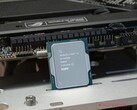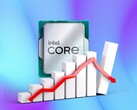Intel will fire 15,000 employees by the end of 2024 to help the company achieve a $10 billion cost savings that includes suspension of stock dividends in Q4. This move follows a drop in second-quarter earnings with an earnings per share (EPS) of -$0.38 (GAAP). Negatively performing segments include Intel’s Data Center and AI, Network and Edge, Altera, and Mobileye categories. The Client Computing Group (CCG) has shipped over 15 million AI PCs since December 2023, and its revenue was up 9% year-on-year.
CEO Pat Gelsinger made this move following the corporate announcement of second-quarter 2024 earnings earlier on the same day on August 1, 2024. The 15% cut in staffing is needed because: “Our revenues have not grown as expected – and we’ve yet to fully benefit from power trends, like AI. Our costs are too high, our margins are too low.”
Naturally, readers might wonder why Intel is making this move when Q2 2024 revenue was a positive $12,800,000,000 and the CCG will ship 40 million AI PCs by year-end. Put simply, the company has been spending a lot on Intel 18A plants and some product segments have been performing poorly, resulting in a net income loss of -$1.6B. Despite projected revenue growth, the primary focus is on short-term stockholder returns, which means increasing EPS and stock prices regardless of long-term performance.
The CEO also plans to reduce capital expenditures by over 20% versus earlier projections now that the construction of Intel 18A node production lines is almost complete, with chip production beginning by year-end.
Reading between the lines, one might guess that Nvidia’s dominance of the AI GPU chip market along with the Intel i9 chip fiasco and delayed 18A chip rollout have dampened revenues in recent years as buyers turn to alternatives.
Readers who don't own stocks but want to experience the power of non-Intel chips while gaming can pick up a nice handheld (like this one on Amazon).
Source(s)
Actions to Accelerate our Progress
A message from Intel CEO Pat Gelsinger to employees regarding the next phase of the company’s transformation plan.
August 1, 2024
Intel CEO Pat Gelsinger sent the following note to employees after second-quarter 2024 earnings were published on Aug. 1, 2024:
Team,
We have moved our All Company Meeting to today, following our earnings call, as we are announcing significant actions to reduce our costs. We plan to deliver $10 billion in cost savings in 2025, and this includes reducing our head count by roughly 15,000 roles, or 15% of our workforce. The majority of these actions will be completed by the end of this year.
This is painful news for me to share. I know it will be even more difficult for you to read. This is an incredibly hard day for Intel as we are making some of the most consequential changes in our company’s history. When we meet in a few hours, I’ll talk about why we’re doing this and what you can expect in the coming weeks. In advance of that, I wanted to preview some of what’s on my mind.
Simply put, we must align our cost structure with our new operating model and fundamentally change the way we operate. Our revenues have not grown as expected – and we’ve yet to fully benefit from powerful trends, like AI. Our costs are too high, our margins are too low. We need bolder actions to address both – particularly given our financial results and outlook for the second half of 2024, which is tougher than previously expected.
These decisions have challenged me to my core, and this is the hardest thing I’ve done in my career. My pledge to you is that we will prioritize a culture of honesty, transparency and respect in the weeks and months to come.
Next week, we’ll announce a companywide enhanced retirement offering for eligible employees and broadly offer an application program for voluntary departures. I believe that how we implement these changes is just as important as the changes themselves, and we will adhere to Intel values throughout this process.
Why Now?
Since introducing our new operating model, we have taken a clean-sheet view of the business and assessed ourselves against benchmarks for high-performing foundries, fabless product companies and corporate functions. This work made it clear our cost structure is not competitive.
For example, our annual revenue in 2020 was about $24 billion higher than it was last year, yet our current workforce is actually 10% larger now than it was then. There are a lot of reasons for this, but it’s not a sustainable path forward.
Beyond our costs, we need to change the way we operate – something many of you shared as part of our Employee Experience Survey. There’s too much complexity, so we need to both automate and simplify processes. It takes too long for decisions to be made, so we need to eliminate bureaucracy. And there’s too much inefficiency in the system, so we need to expedite workflows.
Key Priorities
The actions we are taking will make Intel a leaner, simpler and more agile company. Let me highlight our areas of focus:
Reducing Operational Costs: We will drive companywide operational and cost efficiencies, including the cost savings and head count reductions mentioned above.
Simplifying Our Portfolio: We will complete actions this month to simplify our businesses. Each business unit is conducting a portfolio review and identifying underperforming products. We are also integrating key software assets into our business units so we accelerate our shift to systems-based solutions. And we will narrow our incubation focus on fewer, more impactful projects.
Eliminating Complexity: We will reduce layers, eliminate overlapping areas of responsibility, stop non-essential work, and foster a culture of greater ownership and accountability. For example, we will consolidate Customer Success into the Sales, Marketing and Communications Group to streamline our go-to-market motions.
Reducing Capital and Other Costs: With the completion of our historic five-nodes-in-four-years roadmap clearly in sight, we will review all active projects and equipment so we begin to shift our focus toward capital efficiency and more normalized spending levels. This will reduce our 2024 capital expenditures by more than 20%, and we plan to reduce our non-variable cost of goods sold by roughly $1 billion in 2025.
Suspending Our Dividend: We will suspend our stock dividend beginning next quarter to prioritize investments in the business and drive more sustained profitability.
Maintaining Growth Investments: Our IDM2.0 strategy is unchanged. Having fought hard to reestablish our innovation engine, we will maintain the key investments in our process technology and core product leadership.
The Future
I have no illusions that the path in front of us will be easy. You shouldn’t either. This is a tough day for all of us and there will be more tough days ahead. But as difficult as all of this is, we are making the changes necessary to build on our progress and usher in a new era of growth.
When we began this journey, we set our sights high, knowing that Intel is a place where big ideas are born and the power of what’s possible triumphs over the status quo. After all, our mission is to create world-changing technologies that improve the lives of every person on the planet. And at our best, we have exemplified these ideals more than any company in the world.
To live up to this mission, we must continue to drive our IDM 2.0 strategy, which remains the same: re-establish process technology leadership; invest in at-scale, globally resilient supply chain by expanding manufacturing capacity in the U.S. and EU; become a world-class, leading-edge foundry for internal and external customers; rebuild product portfolio leadership; and deliver AI Everywhere.
Over the past few years, we have rebuilt a sustainable innovation engine that is largely in place and on track. It’s now time to focus on building the sustainable financial engine needed to drive our performance. We must improve our execution, adapt to new market realities and operate as a more agile company. That’s the spirit of the actions we are taking – knowing that the choices we make today, as difficult as they are, will strengthen our ability to serve our customers and grow our business for years to come.
As we take these next steps in our journey, let’s not forget that there has never been a greater need for what we do. The world will increasingly run on silicon – and the world needs a healthy and vibrant Intel. That’s why the work we are doing is so consequential. Not only are we remaking a great company, but we are also creating technology and manufacturing capabilities that will reshape the world for decades to come. And this is something we should never lose sight of as we push forward in pursuit of our goals.
We’ll talk more in a few hours. Please come with your questions so we can have an open and honest discussion about what comes next.















